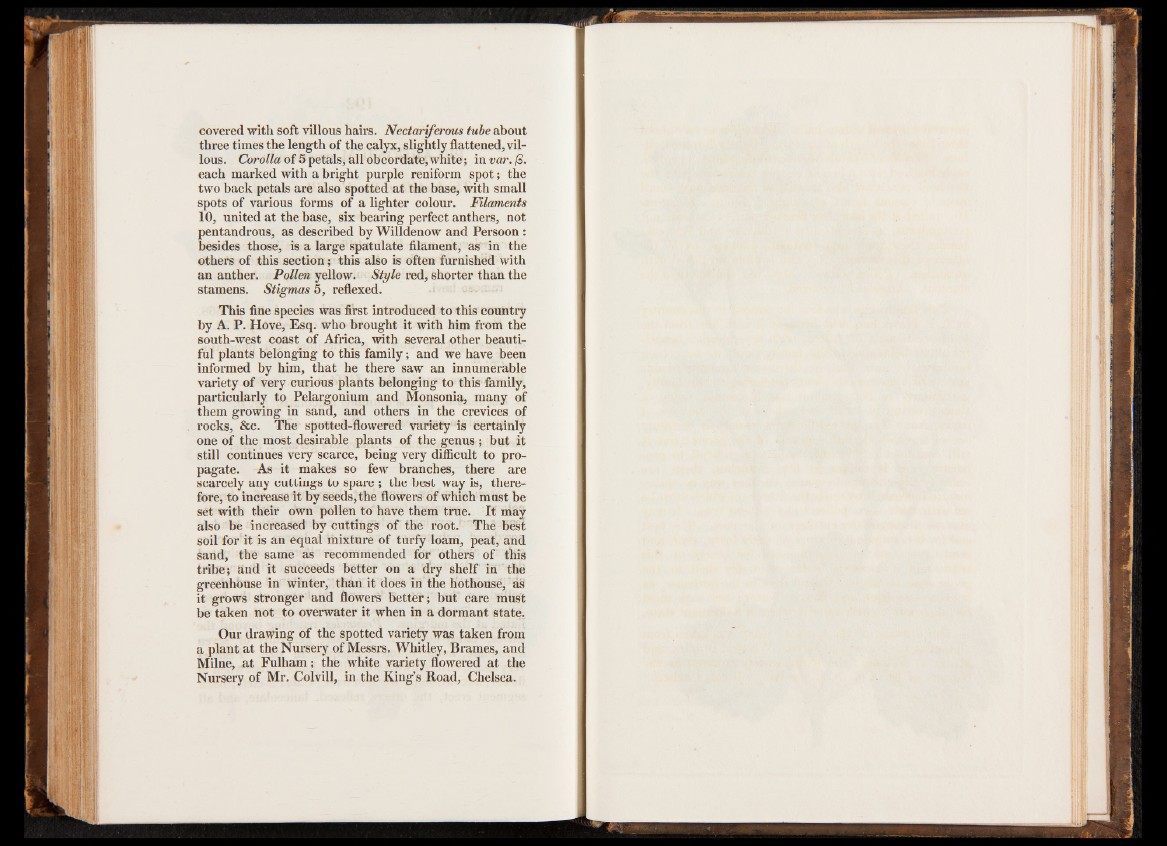
covered with soft villous hairs. Nectariferous tube about
three times the length of the calyx, slightly flattened, villous.
Corolla of 5 petals, all obcordate, white; in var. (3.
each marked with a bright purple reniform spot; the
two back petals are also spotted at the base, with small
spots of various forms of a lighter colour. Filaments
10, united at the base, six bearing perfect anthers, not
pentandrous, as described by Willdenow and Persoon :
besides those, is a large spatulate filament, as in the
others of this section; this also is often furnished with
an anther. Pollen yellow. Style red, shorter than the
stamens. Stigmas 5, reflexed.
This fine species was first introduced to this country
by A. P. Hove, Esq. who brought it with him from the
south-west coast of Africa, with several other beautiful
plants belonging to this family; and we have been
informed by him, that he there saw an innumerable
variety of very curious plants belonging to this family,
particularly to Pelargonium and Monsonia, many of
them growing in sand, and others in the crevices of
rocks, &c. The spotted-flowered variety is certainly
one of the most desirable plants of the genus ; but it
still continues very scarce, being very difficult to propagate.
As it makes so few branches, there are
scarcely any cuttings to spare ; the best way is, therefore,
to increase it by seeds, the flowers of which must be
set with their own pollen to have them true. It may
also be increased by cutting's of the root. The best
soil for it is an equal mixture of turfy loam, peat, and
sand, the same as recommended for others of this
tribe; and it succeeds better on a dry shelf in the
greenhouse in winter, than it does in the hothouse, as
it grows stronger and flowers better; but care must
be taken not to overwater it when in a dormant state.
Our drawing of the spotted variety was taken from
a plant at the Nursery of Messrs. Whitley, Brames, and
Milne, a t Fulham; the white variety flowered at the
Nursery of Mr. Colvill, in the King’s Road, Chelsea.